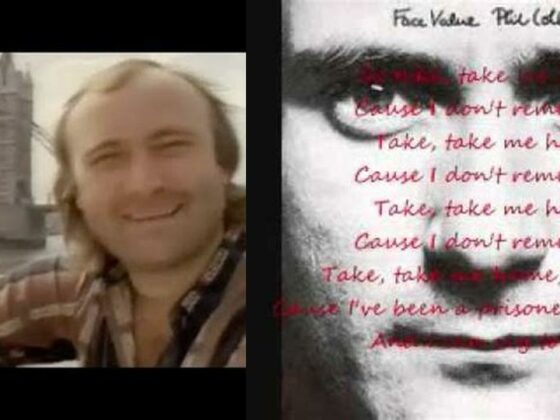My Friend Of Misery – Welcome to our deep dive into the world of Metallica’s haunting ballad, “My Friend of Misery.” Join us as we unravel the profound exploration of pain, camaraderie, and the transformative power of music. Whether you’re a die-hard Metallica fan or simply drawn to the raw emotions of a powerful song, this is your ultimate guide to understanding the deeper layers of “My Friend of Misery.” Get ready to rock and roll through the FAQs and uncover the hidden gems of this timeless classic. Let’s dive in and embrace the melancholic magic of this iconic track!
My Friend of Misery: A Profound Exploration of Pain, Camaraderie, and the Transformative Power of Music
In the realm of rock music, few songs have captured the raw emotions of pain, despair, and the resilience of the human spirit quite like Metallica’s “My Friend of Misery.” This powerful and haunting track, released in 1991 as part of their acclaimed album “Metallica,” delves into the depths of human suffering and the complexities of abusive relationships, while simultaneously offering a glimmer of hope through the transformative power of music.
A Musical Tapestry of Anguish and Strength
From the opening notes, “My Friend of Misery” establishes a mood of somber reflection and emotional intensity. The slow, steady rhythm, punctuated by Lars Ulrich’s thunderous drumming, creates a sense of weight and oppression, mirroring the protagonist’s struggle with depression and anxiety.
James Hetfield’s vocals are raw and visceral, conveying the pain and desperation of someone trapped in an abusive cycle. The lyrics are stark and unflinching, with repeated references to “hitting” and “the weight of the world,” painting a vivid picture of the protagonist’s emotional turmoil.
The chorus serves as a rallying cry for those battling life’s burdens, a reminder that they are not alone in their struggles. Hetfield’s passionate delivery of the line, “I don’t need no friend of misery,” encapsulates the determination to break free from the cycle of pain and isolation.
Confronting the Cycle of Abuse and the Path to Healing
“My Friend of Misery” unflinchingly confronts the complexities of abusive relationships, acknowledging the singer’s role in perpetuating the cycle of suffering. The lyrics reveal a deep understanding of the psychological dynamics at play, highlighting the importance of recognizing one’s complicity in their own pain.
The bridge of the song expresses the profound loneliness and isolation that often accompany mental health struggles. Yet, amidst the darkness, there is a glimmer of hope as the protagonist finds solace in the act of speaking out, reaching out for help, and acknowledging the need for change.
Music as a Lifeline: The Healing Power of Shared Experiences
On a deeper level, “My Friend of Misery” celebrates the transformative power of music as a lifeline for those grappling with similar challenges. Metallica’s authenticity and relatability have made the song a beloved fan favorite, a testament to the universal nature of the themes it explores.
The song serves as a reminder that even in the darkest moments, hope and solace can be found through music and the shared experiences of others. It is a powerful anthem for those struggling with pain and adversity, a beacon of light in the midst of darkness.
A Legacy of Emotional Resonance and Connection
Since its release, “My Friend of Misery” has resonated deeply with audiences worldwide, transcending the boundaries of genre and language. Its raw emotional power and unflinching honesty have made it a touchstone for those seeking solace and understanding in the face of adversity.
The song’s enduring popularity is a testament to Metallica’s ability to tap into the deepest recesses of the human experience, giving voice to the pain, fear, and resilience that reside within us all. “My Friend of Misery” stands as a timeless reminder of the transformative power of music, its ability to heal, unite, and inspire.
As we delve into the depths of “My Friend of
Questions & FAQ about My Friend Of Misery
1. What is the significance of Metallica’s song “My Friend of Misery”?
Answer: “My Friend of Misery” is a profound exploration of pain, despair, and the transformative power of music, capturing the raw emotions of human suffering and resilience.
2. How does “My Friend of Misery” convey the theme of human suffering?
Answer: The song establishes a mood of somber reflection and emotional intensity through its slow, steady rhythm and raw, visceral vocals, mirroring the protagonist’s struggle with depression and anxiety.
3. What album does “My Friend of Misery” belong to?
Answer: The song was released in 1991 as part of Metallica’s acclaimed album “Metallica.”
4. What is the transformative power of music mentioned in the article?
Answer: The song offers a glimmer of hope through the transformative power of music, highlighting its ability to provide solace and strength in the face of adversity.
5. How does the article describe the vocals in “My Friend of Misery”?
Answer: James Hetfield’s vocals are described as raw and visceral, effectively conveying the pain and despair central to the song’s themes.
6. What emotions does “My Friend of Misery” capture?
Answer: The song captures the raw emotions of pain, despair, and the complexities of abusive relationships, while also offering a sense of resilience and hope.


